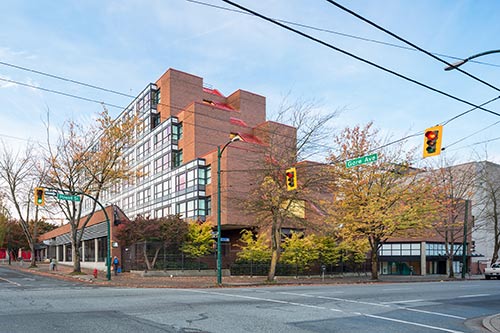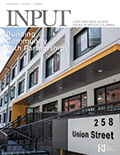Advancing the conversation on land and real estate issues in BC.
Insight: REIBC blog > Development as Intervention
 |
The View, a Bloom Group facility in Vancouver, features 96 units of affordable housing. Credit: The Bloom Group
|
The Bloom Group Community Services Society provides housing options and support services for residents of Vancouver’s Downtown Eastside. It operates a number of facilities in the city, providing support for mental health, shelters for women and children experiencing violence, and hospice services.
Originating from its parent organization, St. James Community Services Society, which has served the Downtown Eastside (DTES) community for almost 60 years, The Bloom Group recognizes that “…there is an absolute gap in our system where people need support. Without this support, the costs are enormous for those suffering and for society at large,” writes Bloom’s Real Estate director, Graham Wood, RI.
With social costs and contributions in mind, Bloom has started analysis that considers housing and services as a social investment, tying the costs saved by such development as line items in proformas, thereby identifying a social return on investment, or SROI. “When properly implemented and supported, social service organizations can and do reduce the burden on cities,” writes Wood. “We reduce call-outs to first responders, we reduce stays in hospital beds, and we even facilitate training and employment and see successes, however small at first, of individuals rising beyond their conditions. When properly supported, we reduce some of the financial burden that would otherwise be borne across the system. In effect, we are the community amenity contribution (CAC) and I will welcome any partner who wants to make that argument with us and effect positive change.”
“Our economic returns have not traditionally been measured at their source, and more often than not, the greatest social returns are not in what we produce, but what we prevent. Traditional social service metrics have been qualitative, and Bloom is reaching to better quantify these positive impacts,” says Wood.
 |
| Download Summer 2019 |
For more on community needs, partnerships, and reconceptualizing community amenity contributions, see Wood’s “Building for Community Needs” in the Summer 2019 edition of Input. Download Summer 2019
Join the conversation on Facebook
